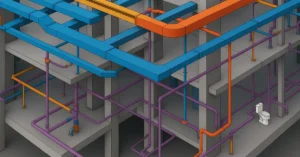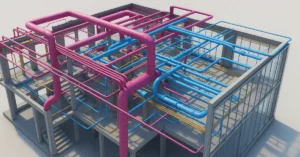Eco Friendly Architecture: Pioneering Sustainability in 2024

In the realm of architecture, a profound shift towards sustainability has been underway for decades, but in 2024, it has reached unprecedented heights. Eco-friendly architecture, also known as sustainable architecture, has emerged as a beacon of hope amidst growing environmental concerns. This design approach not only minimizes the negative environmental impact of buildings but also enhances their functionality, efficiency, and livability. Let’s delve into how eco-friendly architecture is shaping the architectural landscape in 2024.
Large-Scale Additive Manufacturing:
One of the most revolutionary advancements in eco-friendly architecture is the integration of large-scale additive manufacturing, particularly 3D printing technology. Architects are harnessing this technology to create innovative and sustainable solutions that redefine the possibilities of construction. From smart building systems to sustainable energy sources, 3D printing is seamlessly integrated into architectural designs, enhancing both functionality and environmental performance. The precision and efficiency of 3D printing enable architects to minimize material waste while maximizing design flexibility, resulting in structures that are not only eco-friendly but also visually stunning.
Sustainable Design Principles:
At the core of eco-friendly architecture lies a commitment to sustainable design principles. Architects are not merely concerned with aesthetics; they prioritize energy efficiency, waste reduction, and the use of eco-friendly materials in their designs. By incorporating passive design strategies, such as natural ventilation and daylighting, sustainable architects create buildings that are inherently responsive to their environment. Moreover, the integration of renewable energy systems, such as solar panels and wind turbines, further reduces the carbon footprint of buildings, paving the way for a more sustainable future.
Community-Centric Design:
In 2024, sustainable architects are expanding their focus beyond individual structures to embrace community-centric design principles. They recognize the interconnectedness of people and their built environment, and thus strive to create spaces that foster a sense of community and belonging. By promoting walkability, green spaces, and shared resources, sustainable architects contribute to the development of vibrant and resilient communities. From mixed-use developments to urban revitalization projects, these architects are reimagining the way we inhabit our cities, placing community well-being at the forefront of their designs.
Adaptive Reuse and Circular Design:
Another hallmark of eco-friendly architecture in 2024 is the emphasis on adaptive reuse and circular design. Sustainable architects are champions of repurposing existing structures, breathing new life into old buildings while minimizing the environmental impact of construction. By adopting a circular approach to design, they strive to create buildings that are regenerative by nature, where materials are reused, recycled, or composted at the end of their lifecycle. This shift towards a circular economy in the architectural realm not only reduces waste but also promotes resource efficiency and resilience in the face of environmental challenges.
Climate-Responsive Architecture:
With climate change posing a growing threat to our planet, sustainable architects in 2024 are at the forefront of advocating for climate-responsive architecture. They recognize the urgent need to design buildings that can withstand the impacts of a changing climate while minimizing their carbon footprint. By incorporating climate data and analysis into their design process, architects are able to create resilient structures that adapt to local climate patterns and extreme weather events. From passive solar design to green roofs, these climate-responsive buildings not only mitigate environmental risks but also enhance the comfort and well-being of their occupants.
Sustainable Materials:
The choice of materials plays a crucial role in eco-friendly architecture, with architects carefully selecting materials that have low embodied energy, high recycled content, and minimal toxicity. From reclaimed wood to recycled steel, sustainable architects are exploring a wide range of eco-friendly materials to minimize the environmental impact of construction. Additionally, the use of biodegradable materials and natural finishes further enhances the sustainability of buildings, creating healthy and harmonious living spaces for occupants.
Conclusion:
In 2024, eco-friendly architecture is not just a trend; it’s a transformative force shaping the future of our built environment. Sustainable architects are not merely designers; they are stewards of the planet, crafting spaces that harmonize with nature and stand as beacons of sustainable living. Through innovative technologies, community-centric designs, and a commitment to environmental stewardship, these architects are pioneering a new era of architecture that prioritizes people and the planet. As we strive towards a more sustainable future, eco-friendly architecture serves as a guiding light, inspiring us to build in harmony with nature and create a world where all can thrive.
If you’re interested in learning more about architecture firms in Europe, check out this comprehensive list of the top 50 firms compiled by Archgyan. From innovative startups to long-established industry leaders, this list has it all. Take a look and discover some of the most inspiring and influential architecture firms in Europe today.
If you’re interested in architecture and want to learn more about this amazing field, subscribe to our podcast on youtube
For more SketchUp tutorials, head to https://www.sketchupguru.com










